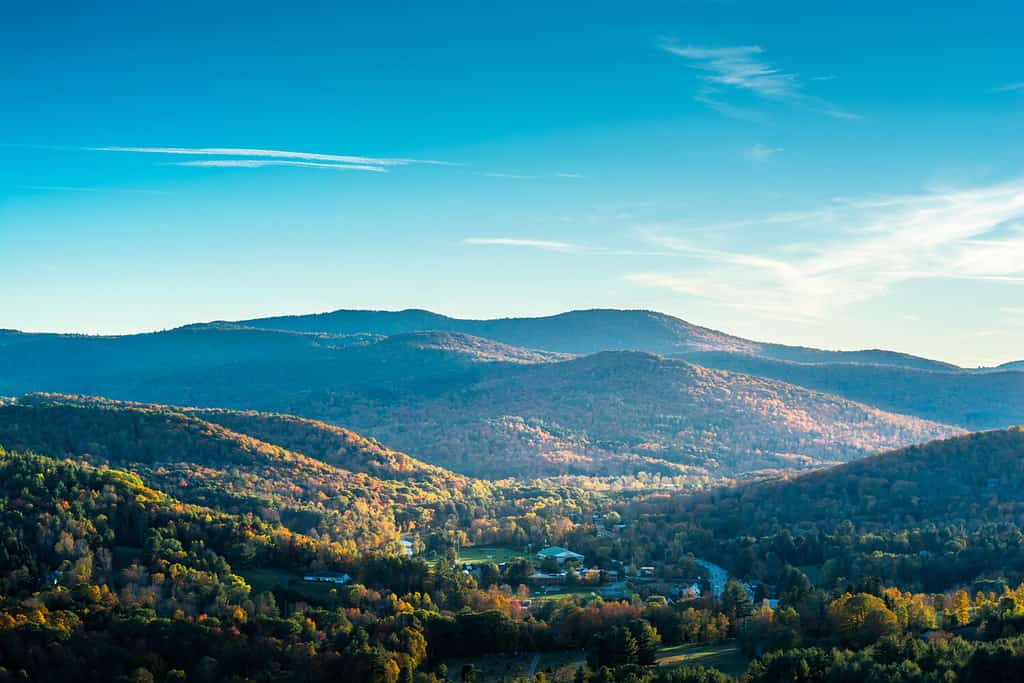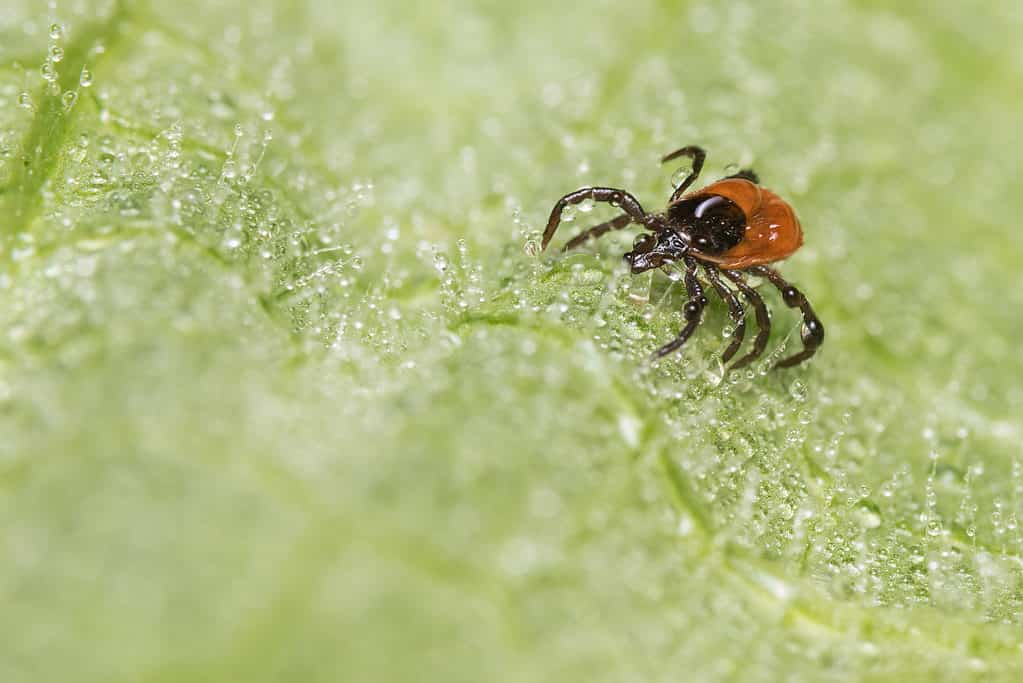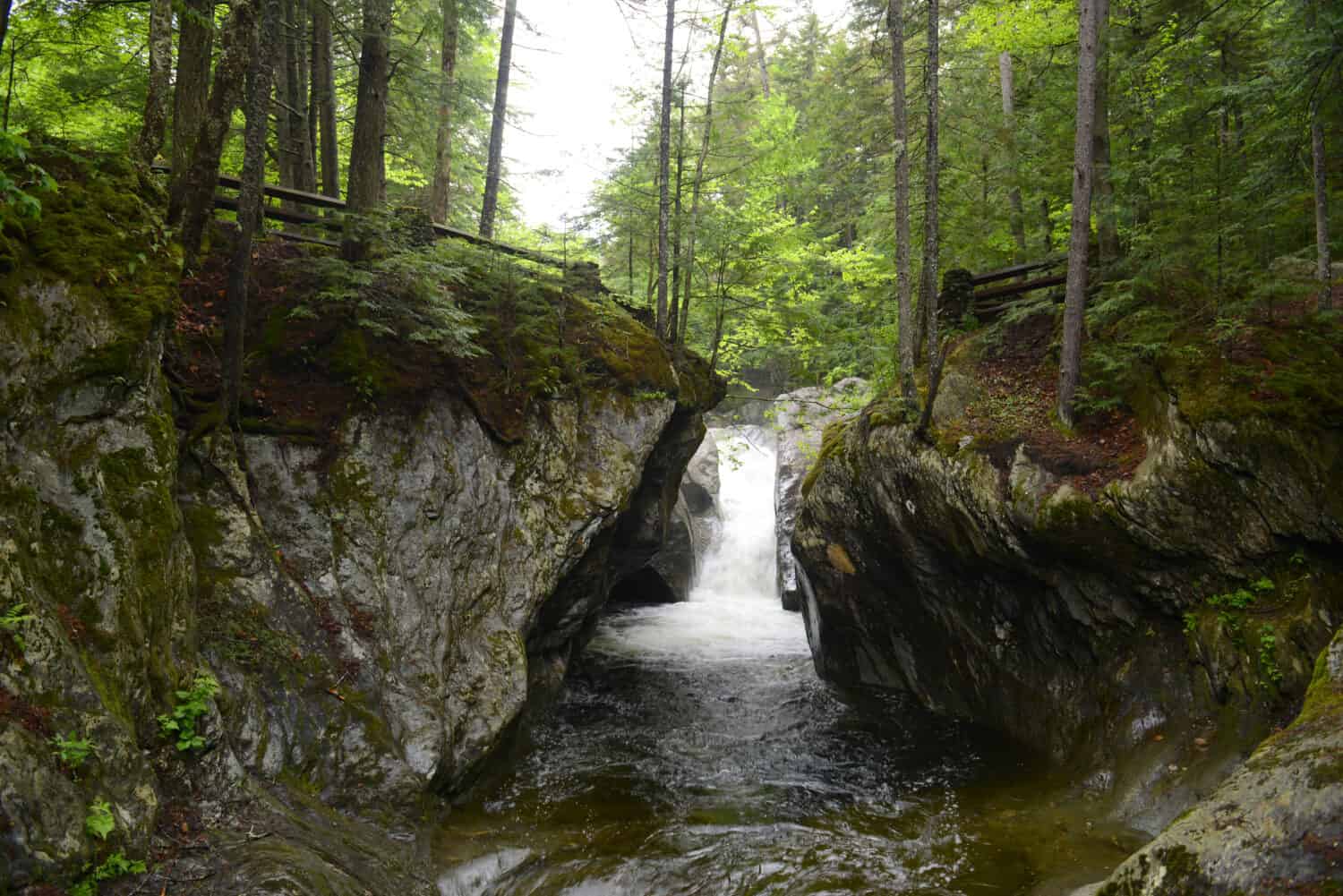Over the past 50 years, temperatures in Vermont have increased by 4°F in the winter and 2°F in the summer. And the number of days where the state experiences temperatures over 87°F has increased from six days a year to around 20 days a year. It’s safe to say Vermont is seeing new temperature patterns and warmer summers on the whole. Interestingly enough, the hottest temperature ever recorded in Vermont has not occurred in the past 50 years but happened 112 years ago.
Vermont’s Average Temperatures

Vermont experiences warm summers with high humidity and cold, snowy winters.
©Eric Urquhart/Shutterstock.com
Vermont has warm summers with high humidity. On average, Vermont residents see temperatures in the mid-70s, with highs peaking at 82°F in July. The summer evenings cool off to around 55°F- 60°F. And between June and August, the state gets about four inches of rain per month.
Winters can get quite chilly, with temperatures between 2°F and 12°F in January. Vermont also has the snowiest winters of all the states. With an average of 89 inches of snow per year and 54 days of snowfall, winters in Vermont are not for the faint of heart.
Spring and fall have milder temperatures between 40°F and 50°F. The spring in April can be quite rainy and muddy, with five inches of rain in that month alone. The fall in October is a time of dry weather, mild temperatures, and spectacular tree colors.
Vermont has an average of 58 days of sunshine. Compare that to Yuma, Arizona, which has 320 days of sunshine yearly.
The Hottest Temperature Ever Recorded in Vermont
On a sweltering Tuesday afternoon, Vermont was hit with its hottest temperature ever recorded. On July 4, 1911, the city of Vernon saw an oppressive 105°F. That’s a blistering day to celebrate the United States Declaration of Independence.
Vernon is on the very bottom-right tip of the state. It has the hottest summers in the state, with temperatures on average hitting 82.9°F.
How Our Bodies React to Hot Temperatures

In extreme temperatures, like the hottest temperature ever recorded in Vermont, more people experience heat-related illnesses.
©PeopleImages.com – Yuri A/Shutterstock.com
The average internal temperature of our bodies is between 97°F to 99°F. Our bodies start cool-down strategies if we get hotter than that. One way is by causing our sweat glands to release sweat out of our pores. As the sweat evaporates, our bodies cool down. If that doesn’t work, our bodies dilate our blood vessels and increase our heart rate. This brings the extra heat to the surface so that it may be released more easily.
But in extreme temperatures, like the hottest temperature ever recorded in Vermont, more people experience heat-related illnesses. Some mild reactions may be heat cramps or a heat rash. But, other serious reactions could be heat stroke. This is when the body temperature reaches 104°F to 105°F. Your skin will look red, and your pulse will be rapid. Other symptoms include confusion, headaches, nausea, dizziness, or fainting. At this point, a person should seek medical treatment because if a heat stroke is untreated, it may lead to death.
Animals That Thrive in Hot Temperatures
Just as the population in Vermont has adapted to the hotter summers, animals have also adjusted. Here are two animals in the state which can survive temperatures like the hottest temperatures ever recorded in Vermont.
Snapping Turtles

Snapping turtles are mostly nocturnal, which is one way they escape the heat of the summer.
©iStock.com/Random_Moments_Photography
As ectothermic reptiles, snapping turtles use external temperatures to regulate their internal body temperature. But even the hottest temperature in Vermont wouldn’t have disrupted the snapping turtles too much. They are mainly nocturnal creatures and spend most of their time in the water, both of which are cooler environments than a 105°F afternoon!
As omnivores, snapping turtles eat both plants and animals. Their diet consists of insects, small fish, worms, snakes, and small mammals. Plant matter makes up about one-third of their diet.
Blacklegged Tick

Researchers found that blacklegged ticks can survive temperatures in the 90s with high humidity for at least 4 days.
©iStock.com/Ladislav Kubeš
Also known as the deer tick, this little creature is notorious for spreading Lyme disease to humans. Researchers have looked into why Lyme disease is more common in states above the Mason-Dixon line rather than in the South. They have surmised that hot temperatures with dry heat cause ticks to hide out in moist environments, like under decaying leaves. As the blacklegged tick seeks shelter from the heat in places most people don’t walk, there is less of a chance of a person getting infected.
They found that blacklegged ticks can survive temperatures in the 90s with high humidity for at least 4 days. However, when it is high heat with low humidity, more ticks die of dehydration.
In a different study, researchers found that blacklegged ticks put through a washing machine cycle on a person’s clothes can survive water temperatures up to 115°F. In fact, 94 percent of the ticks survived washes of 80°F-115°F. It wasn’t until temperatures of over 130°F that all of the blacklegged ticks were killed.
Given these studies, the blacklegged tick would have been well-equipped to survive the hottest temperature ever recorded in Vermont.
In Conclusion
While the hottest temperature ever recorded in Vermont was an extreme 105°F, the most sizzling weather peaks in July. The spring and fall are quite mild, and if you like winters, Vermont is the place to be. With all the snow the state sees, Vermont has beautiful ski resorts and mountains for downhill skiing. The Green Mountain State is a gorgeous place to experience all four seasons.
Thank you for reading! Have some feedback for us? Contact the AZ Animals editorial team.








